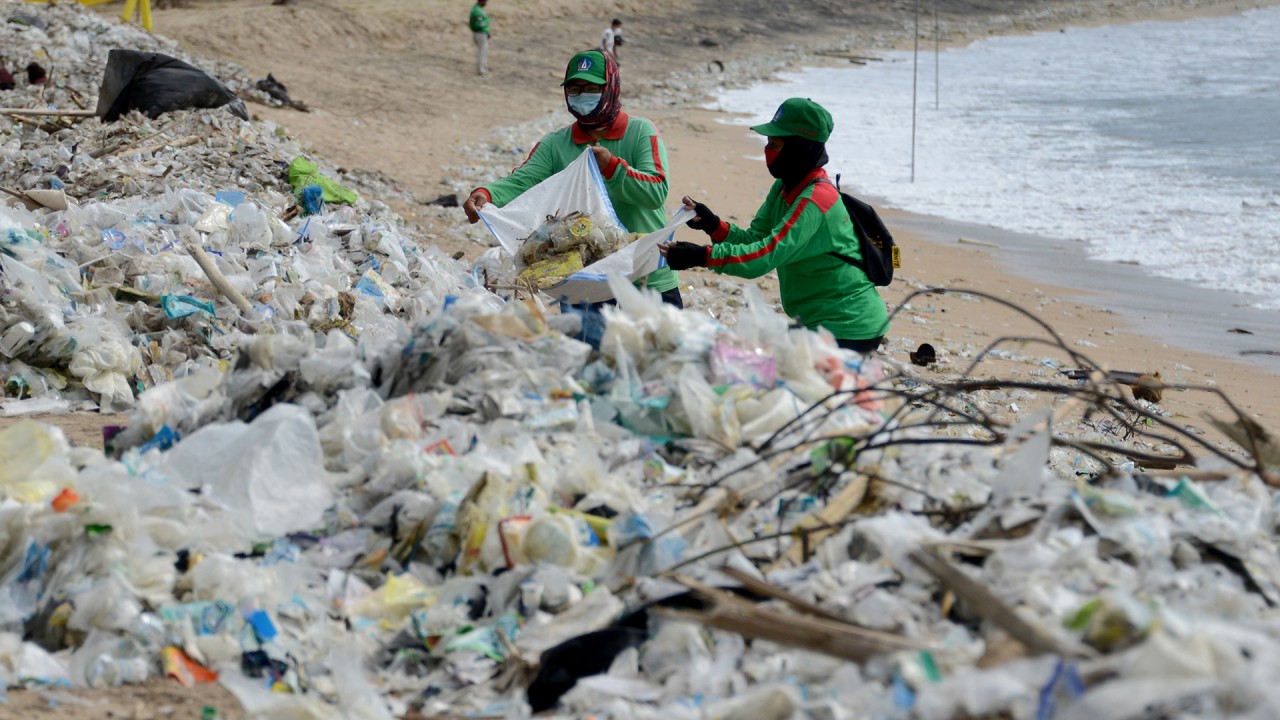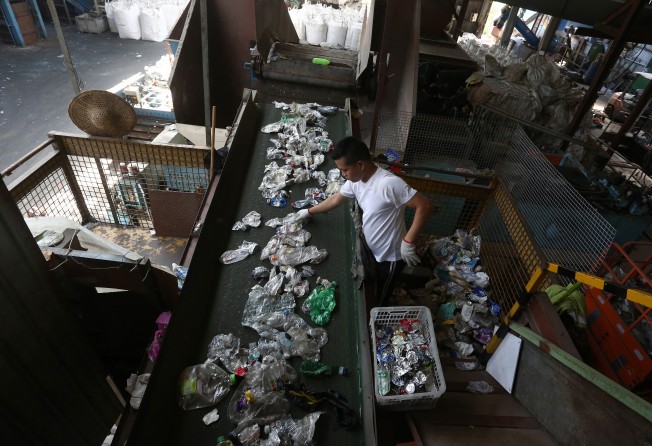
02:30
Bali's famous beaches buried in plastic garbage pushed ashore by annual monsoon

March 18 is Global Recycling Day. Can we really celebrate it here in Asia, or is it time to reckon with the myth that disposable plastic can be recycled?
Before the advent of plastic packaging, neighbourhood variety stores throughout Asia provided goods in small portions for customers who brought in their own reusable containers. Now, those traditional stores are filled with products in plastic packaging, including multilayer packaging, small sachets and single-use pouches that are not recyclable.
In urban centres, these traditional stores have been replaced by convenience stores that promote quick and easy takeaway goodies with a handy rubbish bin at the front door for the waste.
Most urban centres in Asia can ill-afford waste management and recycling systems that tackle single-use packaging. The situation is worse for the region’s island nations and rural communities that lack even proper waste collection.
For them, this plastic waste deluge in the past few decades has put their countries in the global spotlight of blame for the 8 million tonnes of plastic going into the ocean every year. Yet, is this ocean plastic crisis really their fault?
With global plastic recycling rates hovering at less than 20 per cent and many places, including Hong Kong, challenged with the logistics of recycling, the dependence on the false claim that plastic recycling works needs to be made more transparent. Even the younger generation in Hong Kong does not believe it can work.
The truth is that fewer than one of every 10 products made with plastic packaging has been recycled since the advent of plastics production in the 1950s. And the rest? In Hong Kong, disposable plastics have ended up in landfills.
For much of Asia, they have landed in open dumpsites, polluting incinerators, and contaminated rivers and oceans. This track record of plastic recycling failure does not inspire confidence in the promises many companies continue to make to improve recycling.
Even the most industrialised countries with advanced waste management systems have failed to properly collect and recycle disposable plastics. This is why they shipped their waste to Asia for sorting, cleaning and processing and counted it as “recycled” in their home country.
The evidence, however, shows most of the plastic waste being exported by rich nations to Asian countries is simply not recyclable. This exported plastic waste has fouled the environment and polluted the poorer communities which accepted them.
Take Hong Kong for example. In 2020, nine out of 10 plastic recyclers closed because so much of the collected disposable plastic was contaminated by food waste and the recyclers could not compete with virgin plastic prices.
Despite the collapse of the recycling sector in many parts of the world, in part because of plastics overproduction, the plastics industry is still intent on expanding production in the coming years. Meanwhile, it is still promoting the mantra of recycling as the solution to plastic pollution.
Estimates suggest the cumulative plastic production in 2050 will be 34 billion tonnes, four times that of 2017. Virgin plastic production is not going away any time soon.
The only plastic recycling that is happening in Asia at scale is PET or HDPE recycling in major urban areas. That is the plastic used for most beverage bottles and consumer care products such as hand soap. This is because many consumer brand companies chose PET as their packaging of choice.
It is lightweight with low transport costs, easily modified for consumer marketing purposes and incredibly cheap. Still, most recycling operations in the region are actually just “downcycling”.
The recycled plastic is converted into another product whose quality is inferior to the original material. Little actual recycling takes place because of the challenges of food contamination in waste collection systems and varying packaging standards used by manufacturers.
For the past three years, the global movement Break Free from Plastic has completed a brand audit of the top global plastic polluters. Seven of the audit’s top polluters – The Coca-Cola Company, PepsiCo, Nestlé, Unilever, Mondelez International, Mars, Inc and Colgate-Palmolive – have joined the Ellen MacArthur Foundation’s New Plastics Economy Global Commitment. They have established the goal that their plastic packaging will contain 50 per cent recycled content by 2030.
But according to a recent foundation report, the signatories only reduced their virgin plastic intake by 0.1 per cent from 2018 to 2019. Without concrete improvements, these commitments amount to greenwashing by the companies for the sake of brand image.
It is clear that recycling alone will not be enough to solve the plastic pollution crisis. The real solution lies further upstream in reducing the amount of plastics being produced. This would be good for climate change as the feedstock for plastic is fossil fuels.
It might also compel consumer goods companies to reduce their plastic footprint and invest in alternative reuse or refill systems to deliver their products to the consumer.
According to a recent McKinsey report on sustainability in packaging in Asia, more than 65 per cent of consumers in Indonesia, India and China surveyed said they were willing to pay for more for sustainable packaging. In India, respondents indicated they perceived paper and glass packaging as more sustainable.
Isn’t it time global brands consider that maybe the sustainable packaging consumers really want is refillable and reusable containers? Then we might have more to celebrate on the next Global Recycling Day.
Von Hernandez is global coordinator at Break Free from Plastic. Marcy Trent Long is a host and producer at Sustainable Asia Podcasts